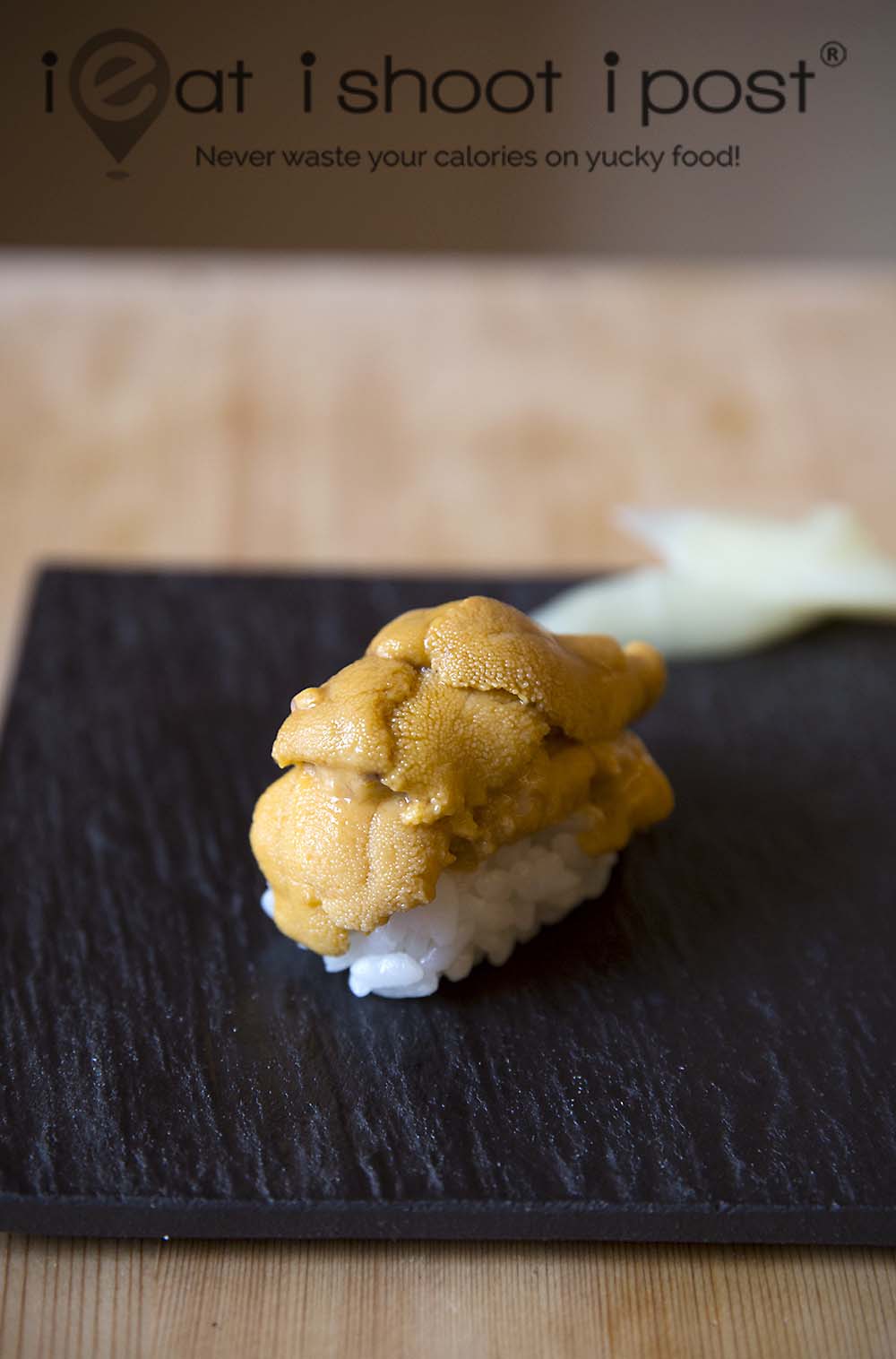
Truth be told, if I had to choose between a bowl of rice topped with raw fish or grilled wagyu beef, I would choose the beef in an instant. Sushi is something I only came to appreciate after Chef Nogowa instructed me on sushi etiquette back in 2009. Since then, I have developed a fascination for the world of sushi, not so much for the taste but more for the shokunin spirit that it embodies.
The Japanese word shokunin may be loosely translated as ‘artisan’, but according to master woodworker and author, Tasio Odate,
“….such a literal description does not fully express the deeper meaning. The Japanese apprentice is taught that shokunin means not only having technical skills, but also implies an attitude and social consciousness. … The shokunin has a social obligation to work his/her best for the general welfare of the people. This obligation is both spiritual and material, in that no matter what it is, the shokunin’s responsibility is to fulfill the requirement.”
Personally, I enjoy sushi because I am sitting at the sushi bar to experience the Sushi chef’s pursuit for perfection. That is why I seldom eat at kaiten zushi (conveyor belt sushi) or order a chiraishi bowl because I never really have a craving for raw fish. What I do crave for is the experience of putting a slice of fish in my mouth that has been meticulously sourced, sliced and moulded atop a nugget of rice whose temperature and proportion has been accurately calibrated to perfectly match the fish. That piece of sushi embodies years of training and the relentless pursuit of perfection and it is this spirit that transforms a mere slice of raw fish into a metaphysical moment of gastronomic pleasure.
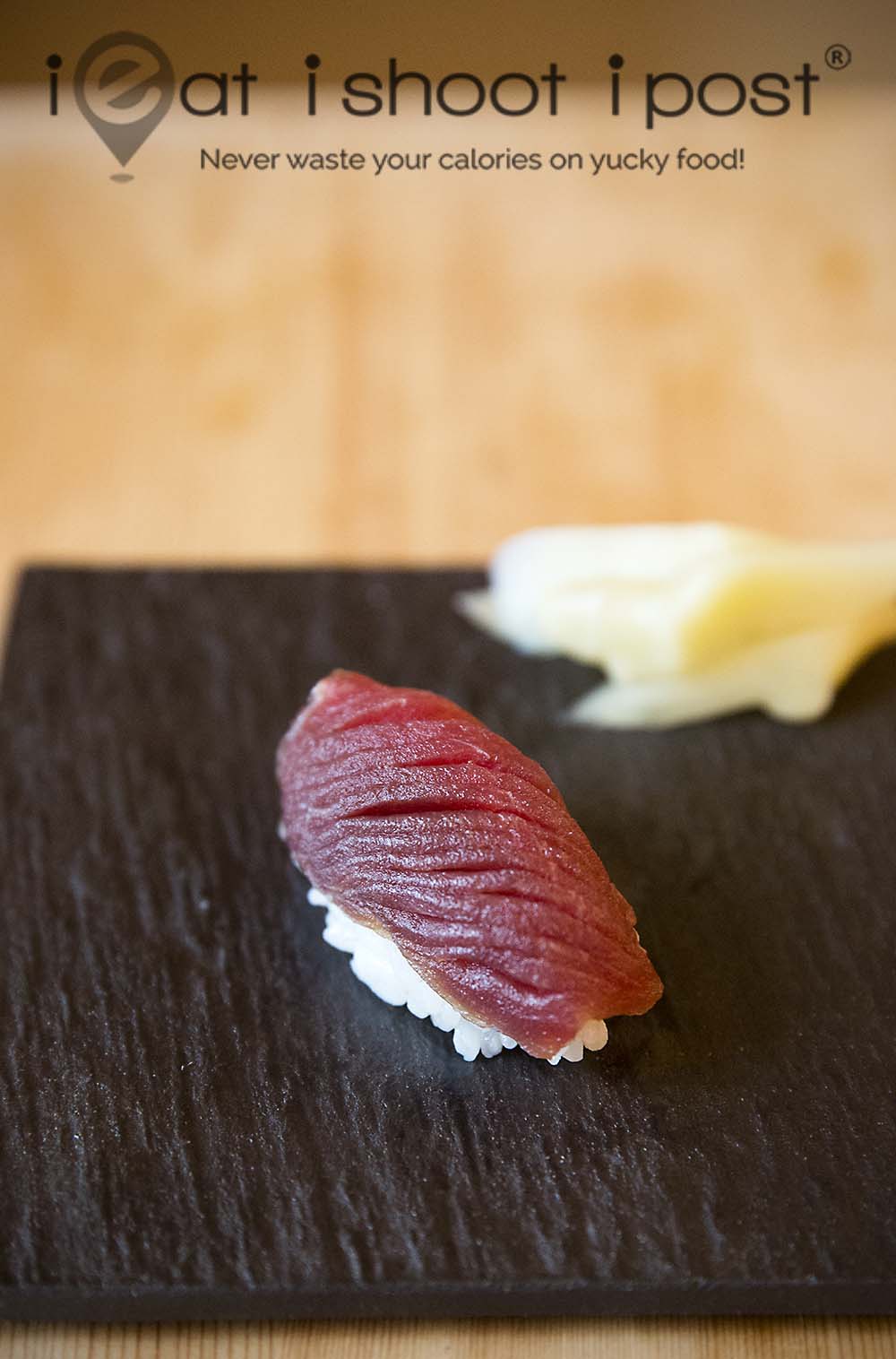
I first heard of Ashino from Jamie Ee who wrote a review about it in the Business Times. Jamie is one of our local food writers whom I follow closely especially when it comes to Japanese food. She can be quite stingy with her praise, so from what she said about Ashino, I knew it was somewhere worth checking out.
My first meal at Ashino was courtesy of my Japanese foodie friend, Hisato Hamada, who invited me to an omakase meal at Ashino. I connected quite quickly with Chef Ashino whose single minded passion for his craft coupled with a good command of English made the sushi meal both gastronomically as well as intellectually stimulating.
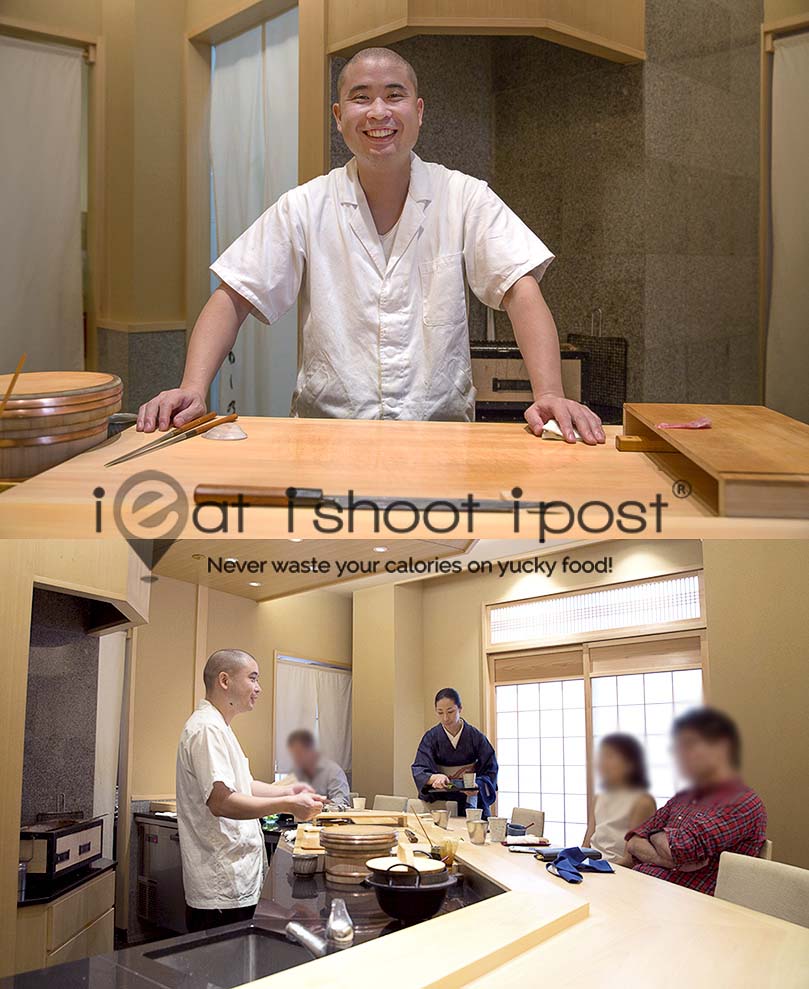
Chef Ashino specializes in jukusei sushi (熟成寿司) ie aged sushi which is a relatively modern form of sushi made popular by Chef Nakazawa of Sushi Sho. Traditional sushi chefs do age their fish to some degree, but it was the more progressive chefs like Nakazawa-san who developed it into a special form where each fish is aged and served only when the flavour is at its peak. Other places in Tokyo specializing in jukusei sushi are Sushi Tsu in Roppongi where Chef Ashino honed his skills and the 2 Michelin star Sushi Kimura.
Aging of fish is not a new concept. We Teochews have always known that fish is tastier after a few days of aging which is why Teochew steam fish places always display their fish on ice rather than live in a tank. In fact, live fish may not be all that great because they are often farmed and if the fish has been living in the tank for a while, the quality of the meat declines even if it were still “live”.
The tastiness of fish comes from a compound called inosinic acid, a breakdown product of adenosine triphosphate (ATP) which is found in the muscle cells of the fish. As the fish ages, the amount of inosinic acid increases as the enzymes start breaking down the muscle proteins, converting ATP to inosinic acid. At the same time, the enzymes also begin to tenderize the flesh. The optimum time to eat the fish is when the flavour and texture both reach their peak. After this point, the fish will start to deteriorate and turn mushy.
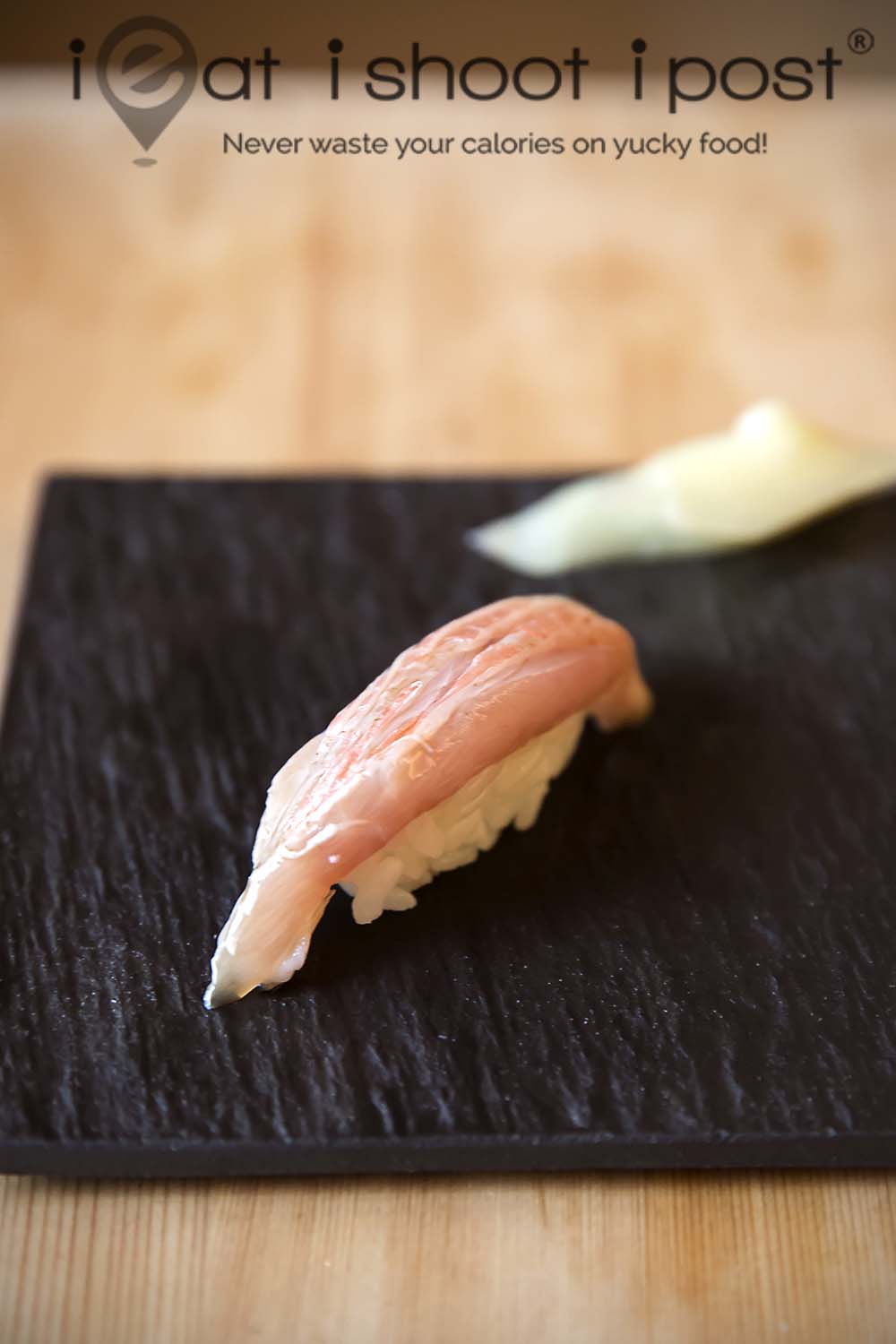
The skill of aging the fish comes from years of experience. Once the fish is filleted, it is placed on ice in a special fridge and inspected daily. Chef Ashino will inspect its appearance as well as taste the fish everyday in order to determine when the flavour is at its peak. Some fish, like the kinmedai (splendid alfonsino) is first soaked in yu-an sauce for a few minutes and aged as long as 17 days! Yu-an sauce is a mix of yuzu, shoyu, mirin and sake and contains glutamic acid which acts synergistically with the inosinic acid to produce a multiple fold increase in umami.
NB: The combination of glutamate and inosinate can be found in many packaged snacks. These compounds can be produced synthetically. They can be identified by their “e” numbers, e620 and e630 respectively. Look for this the next time you open your favourite packet of pototo chips!

The process of producing the ultimate piece of sushi starts with procuring the best fish. This is where the relationship between the chef and the fishmonger is paramount. Seasonality and provenance are of utmost importance as no amount of aging will be able to improve the taste of sub-standard fish. The way the fish is caught and processed also plays a significant role in the quality of the tane.
Chef Ashino placed the next piece of sushi on the counter top in front of me and said “buri, aged 2 weeks”.
He went on to tell me that this particular fish had come from his personal supplier in Hokkaido who practises a special form of slaughtering known as shinkejime. Most sushi lovers would probably be familiar with the traditional Japanese technique of killing fish known as ikejime. In ikejime, the fish is first killed with a quick stab to the head just behind its eyes which destroys the brain resulting in instant death. This is then followed by cut to the tail to expose the backbone into which a stiff wire is then inserted to destroy the spinal cord. A nick is then made behind the gills to sever the main artery and the fish is then placed in ice water to bleed out. This way of killing the fish preserves the amount of ATP in the muscle tissues resulting in a higher level of inosinic acid and thus more flavour. Fish killed this way also ensures that they remain fresh longer.
The shinkejime technique is a more recent innovation which tries to achieve the results of ikejime but without having to disfigure the the fish. Fish killed with this method would not bear the tell tale signs of the ikejime technique. To kill the fish, a spike is inserted in between the eyes to destroy the brain. Then a wire is inserted through the same hole into the spinal cord. It takes more skill as the fishmonger has the insert the wire blind. A cut is similarly made the area behind the gills to sever the artery so that the blood can be pumped out by the still beating heart. This process of bleeding the fish ensures that it will taste pristine for a longer period of time.
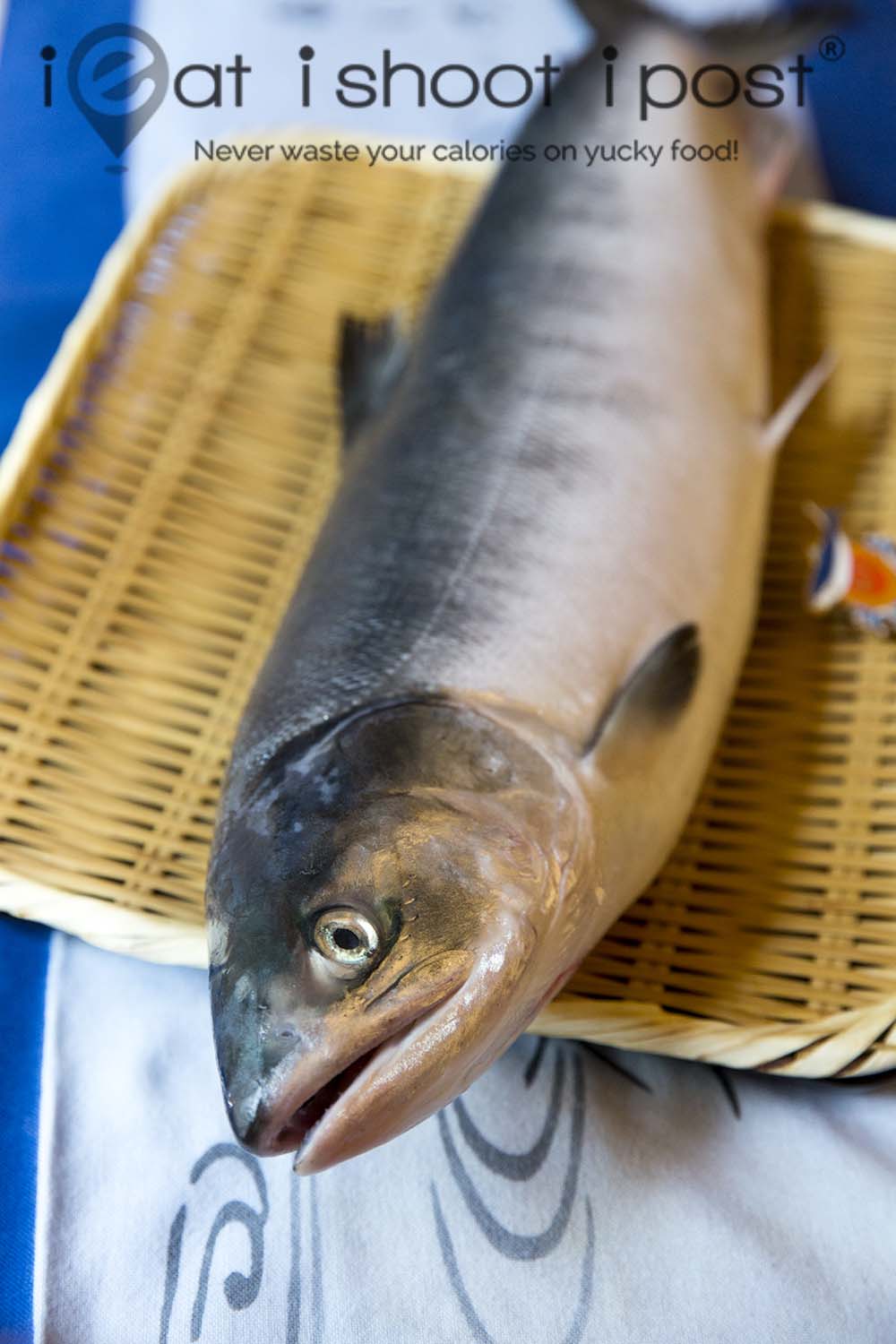
I was first introduced to keiji during my first meal at the restaurant. Ashino-san told me at the time that this is a very rare salmon as only one or two are found amongst every 10,000 salmon caught. Salmon start life as fingerling in rivers before making their way to the ocean where they grow and become sexually mature before returning to the same river to spawn. The keiji are immature salmon which have somehow followed the other sexually matured fish back to the spawning grounds and got caught in the process.
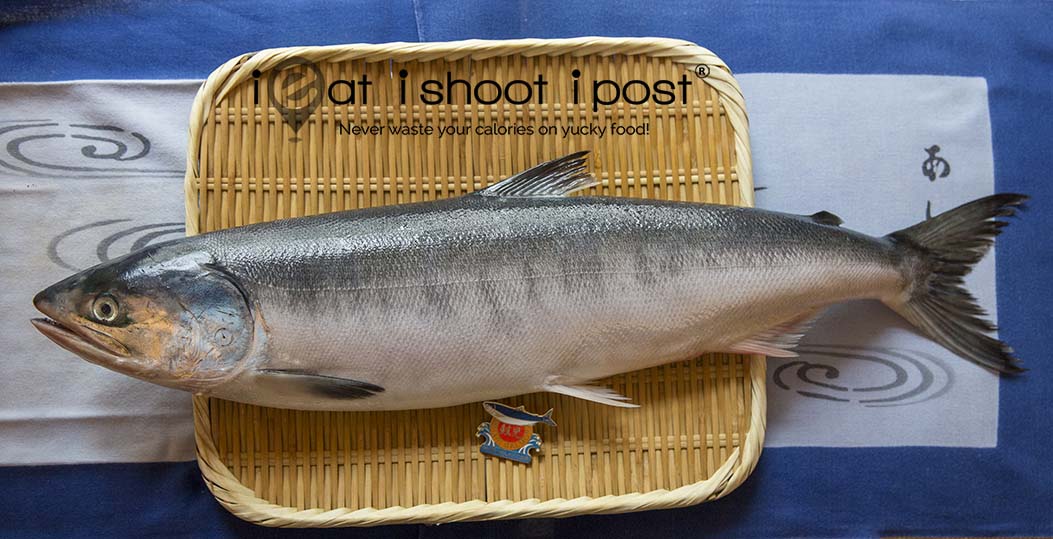
These fish are so rare that they are not often seen even in high end sushi bars in Japan. It was the featured ingredient in an Ironchef episode between Morimoto and Fujii in 1998. A whole fish back then cost $300. I am told that they now cost almost $1000 each!

Since keiji have yet to develop their sex organs, they tend to contain more fat than the fully matured salmon. The meat also tastes sweeter and doesn’t have as strong a fishy flavour as matured salmon. It is considered a rare delicacy in Japan which money can’t always buy.
The keiji is aged five days before it is served and Chef Ashino sells each piece for $35 which, he tells me, only really covers his cost. He only serves it so that his patrons have a chance to experience this rare fish! The season for keiji is in the autumn so I was very fortunate to be able to photograph the last fish for this season!
I guess the question on anyone’s mind is whether it is worth paying $40 for a slice of juvenile salmon, right? Well, not if it is simply for the taste. It is very good and the difference between this and a slice of normal salmon is quite easily discernible. But I don’t think I would need to have it again. However, if you are a sushi snob, it is a small price to pay for the bragging rights!
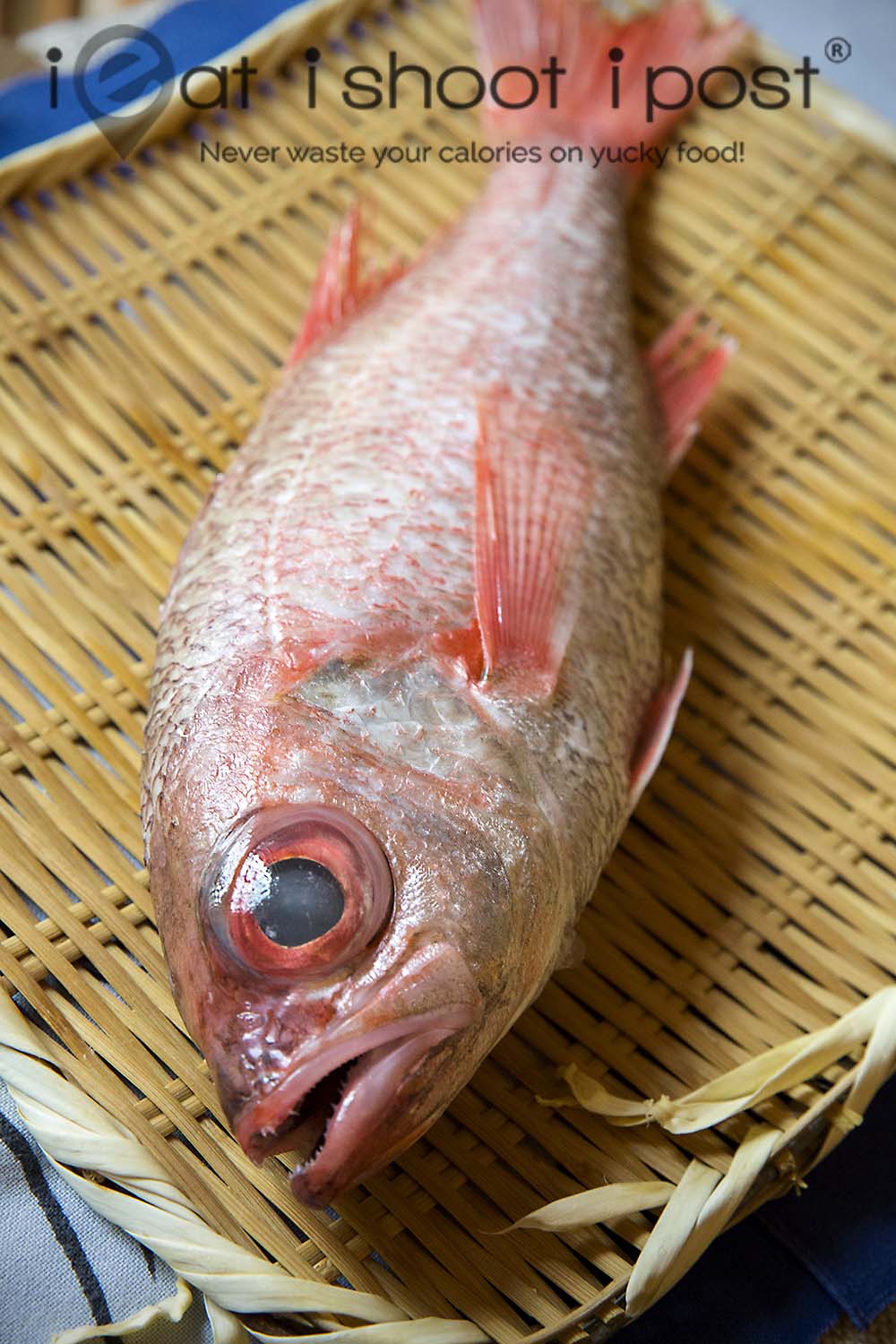
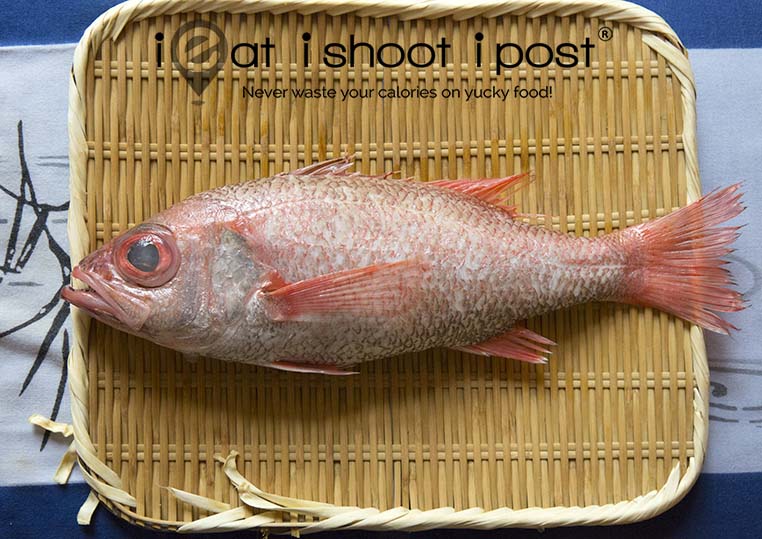
Of late, I have been quite enamoured with the nodoguro or black throat sea perch (doederleinia berycoides) and have had this fish several times this year. Also known as akamatsu, this fish is considered by some to rival otoro, especially by the people living along the coast of the Sea of Japan where it is caught. Although it is a white flesh fish, the meat is full of fish oils and it is one of the tastiest fish I have come across.
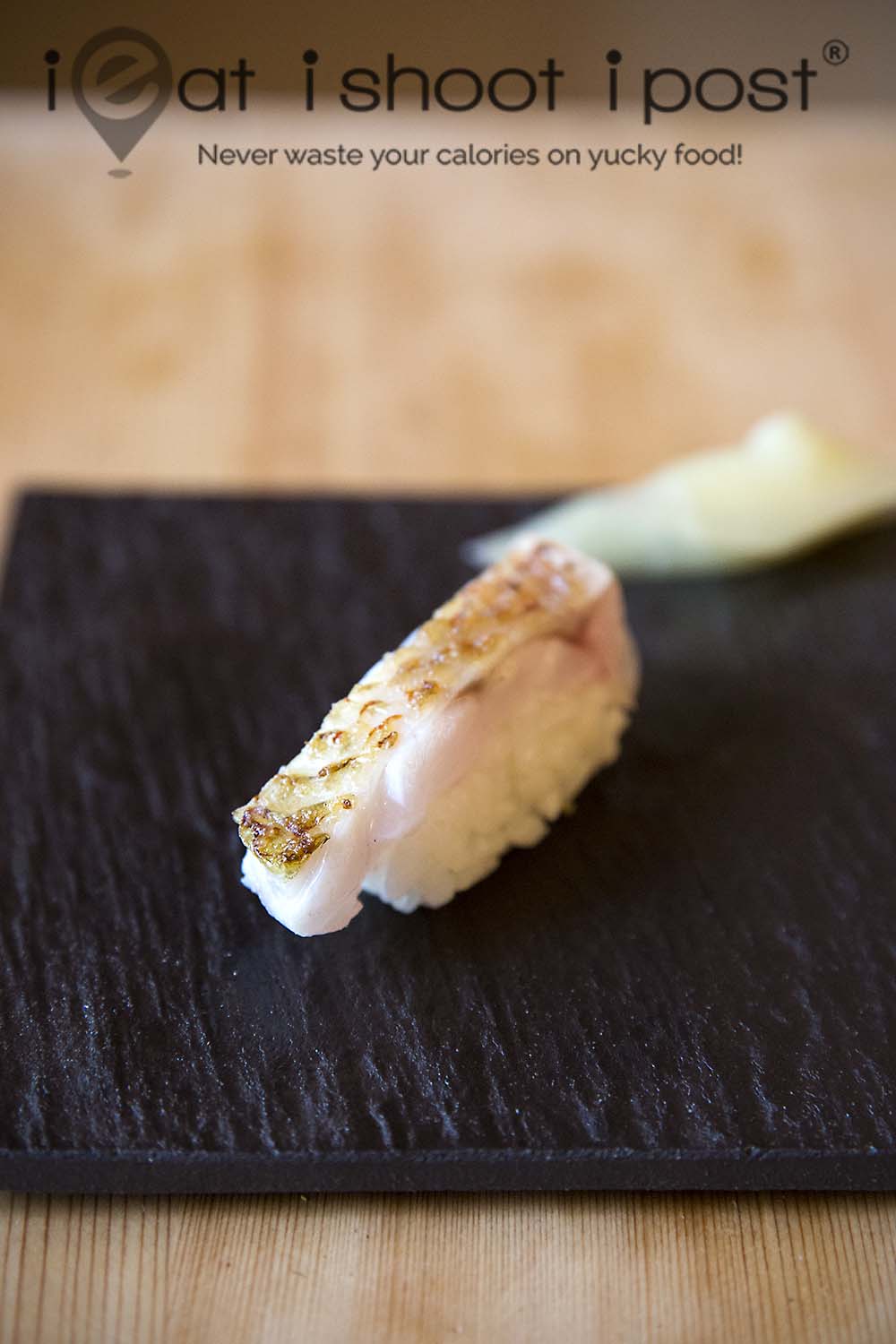
Chef Ashino ages the fish for 7 days before it is grilled over binchotan to crisp the skin and give it a hint of smokiness before moulding it over a nugget of rice. Nodoguro is a deep water fish so it can be caught throughout the year but it is not always available as it is getting harder to catch in recent years. If this is available, make sure to order it as it is worth trying.

The otoro is the fattiest part of the tuna and is usually the most expensive part of the fish. It is full of Omega 3 fish oil which melts at body temperature to cover the palate with its unctuous exuberance. The only problem with otoro is that the muscle layers are separated by a chewy membrane which can hinder an otherwise ecstatic experience. Most sushi chefs slice the otoro across the grain resulting in a tane with distinct layers which is often the hallmark of otoro. However, some sushi snobs eschew otoro because of the membrane, preferring to order chutoro which is easier to chew even though it is less fatty.

In order to create the ultimate otoro experience, Chef Ashino starts with a block of tuna from Oma, the fishing port best known throughout Japan for producing the best tuna. After sectioning the otoro, he ages it for 11 days before employing the hagashi technique of slicing the meat along the fascia in order to remove it. This is more time consuming and results in more wastage but you end up with a slice of otoro without the chewy membrane. He then scores both surfaces of the otoro with at least 20 cuts, 2mm apart to produce a morsel of unhindered pleasure.
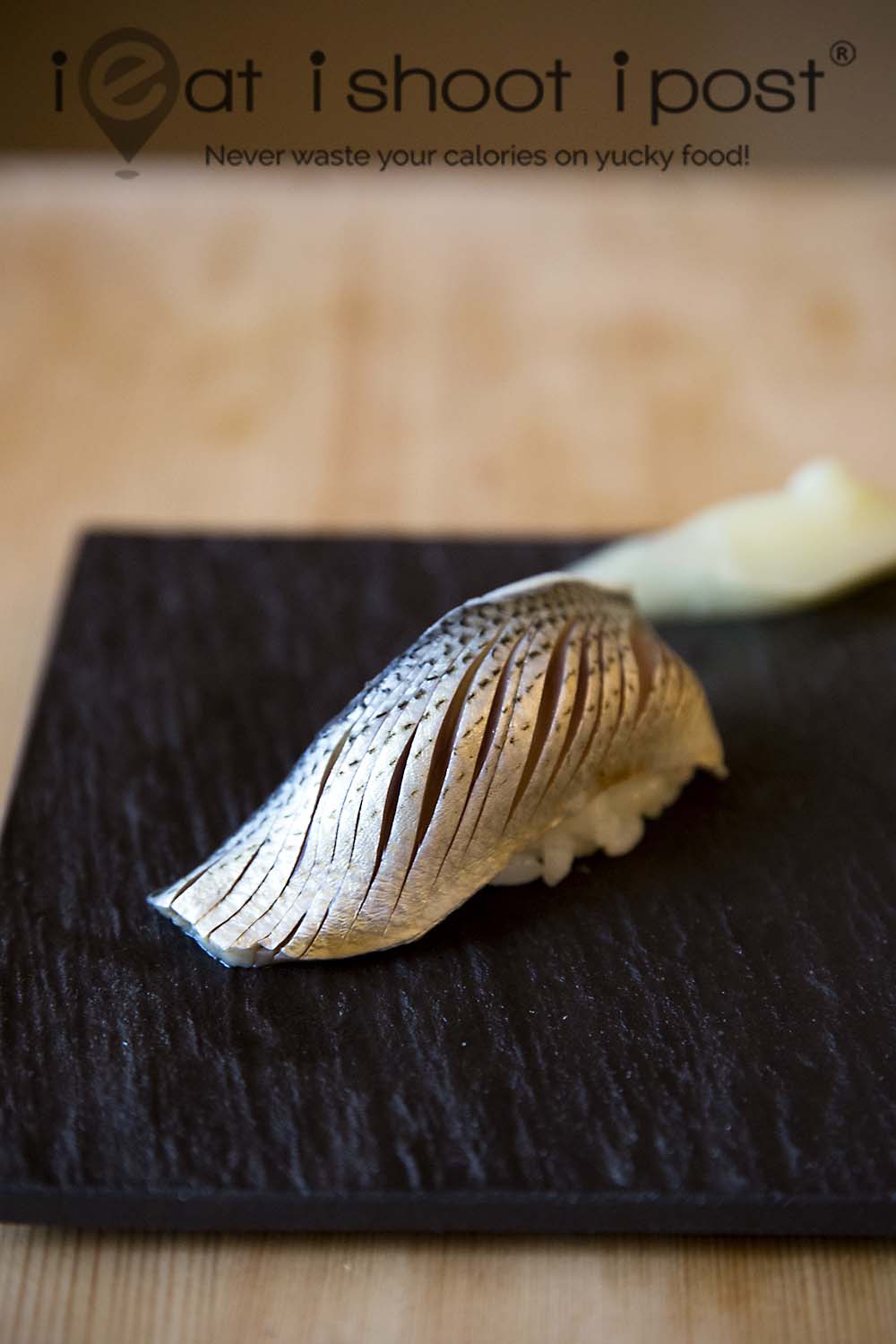
It is said that one orders kohada (gizzard shad) on the first visit to a sushi bar in order to assess the skill of the chef. This silver skin fish is the most iconic of edomaezushi and has been part of the tradition since sushi started as a streetside snack in the 1800s. The flavour of the fish is said to be “hidden” and it takes the skill of the sushi chef to draw out its flavour with salt and vinegar. I have tried this on many occasions and have always found the fishy odour to be a little off putting. It has always left me wondering about the Tokyoite’s fascination with this particular tane.
Ashino’s kohada was the moment of epiphany that has eluded me over the years. I had finally eaten kohada which I actually enjoyed and all the talk about the fish’s “hidden” flavour has finally made sense. The fish still does have a strong flavour but it is more of a un-threatening fishy umami that is delicately balanced with a tartness that is mellow and not jarring.

Size matters in sushi which is why Ashino piles his uni sushi with luscious tongues of Higashizawa brand uni, one of the most sought after brands at Tsukiji market. The ratio of uni to rice is such that there is enough uni to flood the palate with its opulence and just enough rice to provide contrasting temperature, flavour and texture.
The same principle of proportion applies to the botan ebi which is he sources from Hokkaido. Each prawn is large enough to fully envelop the shari, so that when you pop it into your mouth, the whole palate is covered with its natural, tacky, sweetness.
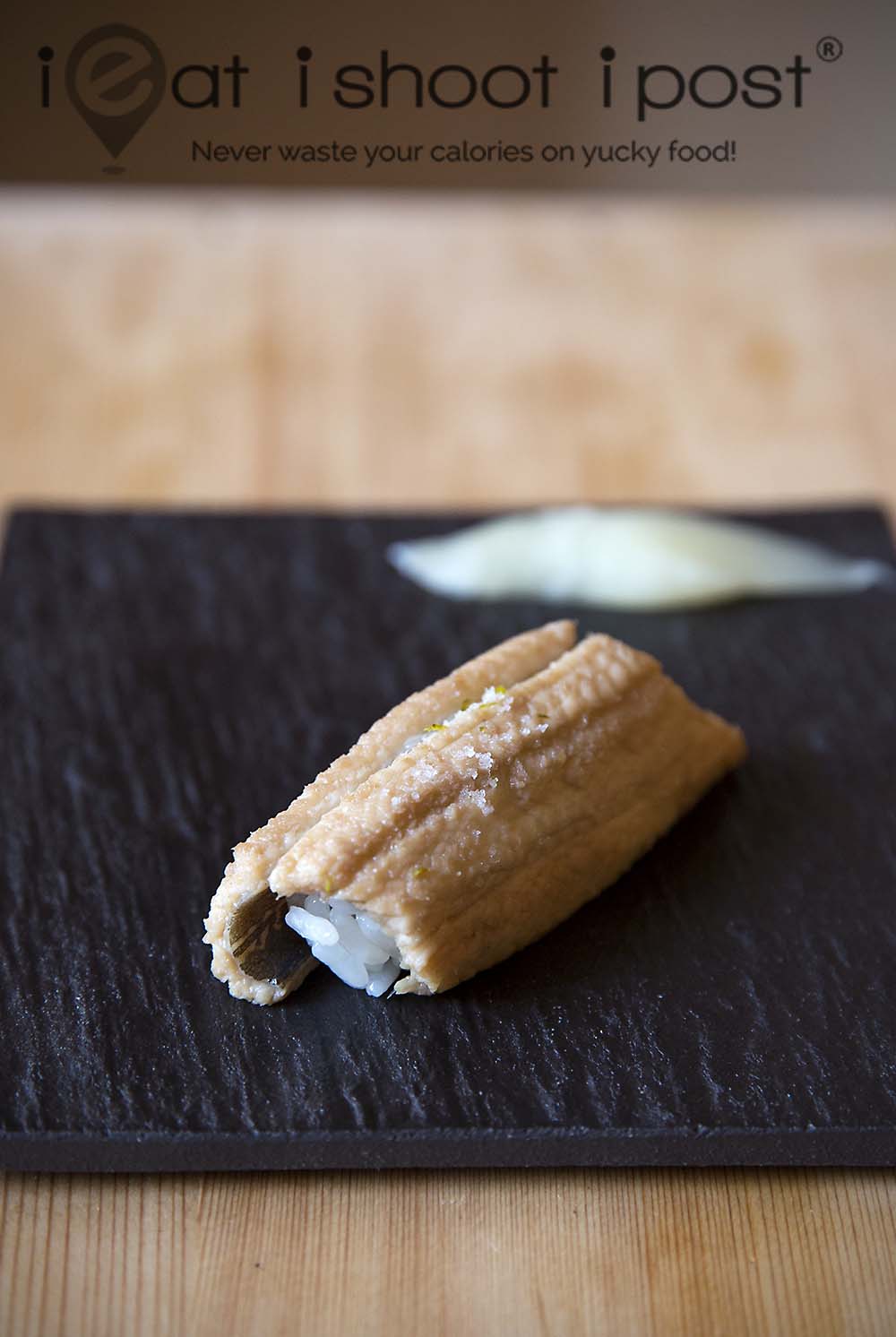
Anago has always been one of my favourite sushi and it is always served towards the end of the sushi course because it is a cooked tane that is covered with a sweet eel reduction. The eels here are slaughtered live at the restaurant and immediately cooked which results in a texture that is smooth and creamy, unlike the packaged pre-cooked version that is more widely available. It’s one of the best anago I have come across.
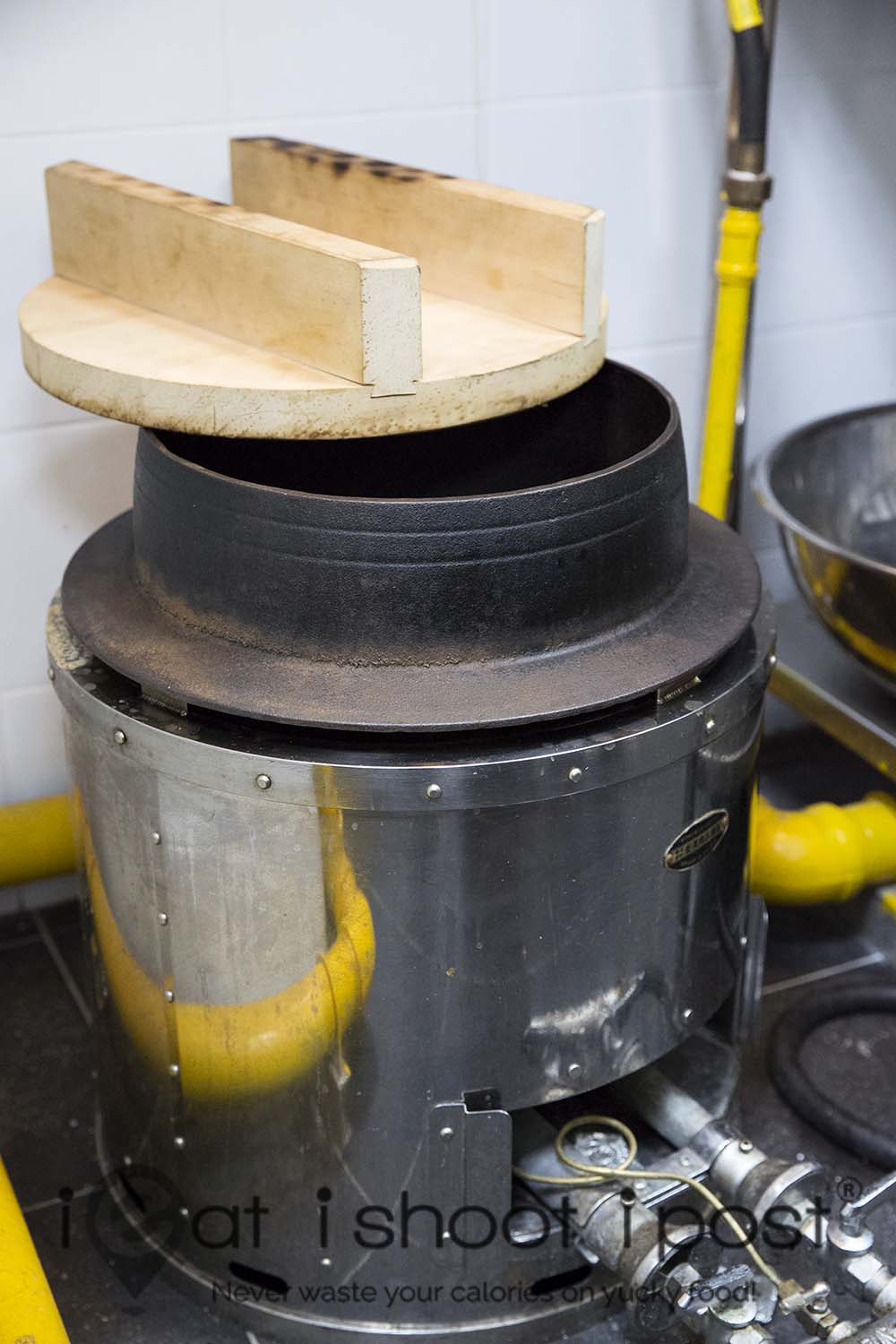
One final note about the shari (rice) before I end today’s sushi discourse.
The shari is excellent with just enough tang that doesn’t overpower the subtle sweetness of the rice. The texture is excellent. It has a toothy bite and enough starch to barely hold it together such that it breaks apart with just the slightest amount of pressure. Ashino uses a mix of koshihikari (Niigata) and nanatsuboshi (Hokkaido) rice which is washed and cooked with imported Mt Fuji water. The rice is cooked in a traditional cast iron rice pot which he tells me causes the rice grains to “dance” in the water which is one of the keys to the texture of the rice.
Conclusion
Ashino is an excellent choice for anyone seeking an authentic sushi experience in Singapore. Even my seasoned Japanese foodie friend remarked that he felt as if he just had a sushi meal in Ginza!
Expect to pay top end prices here with lunch sets starting from $120++ and dinner from $220++. Just be careful about ordering things like keiji and uttering the word “omakase” here unless you have an unlimited budget. Price aside, every part of the sushi experience is meticulously put together and Chef Ashino is fluent in English so you can actually engage with the Sushi Chef during the course of the meal, something which non-Japanese speakers like myself are seldom able to do when dining in Japan! 4.75/5
Acknowledgement
Thanks to Chef Ashino for hosting the photography and tasting session



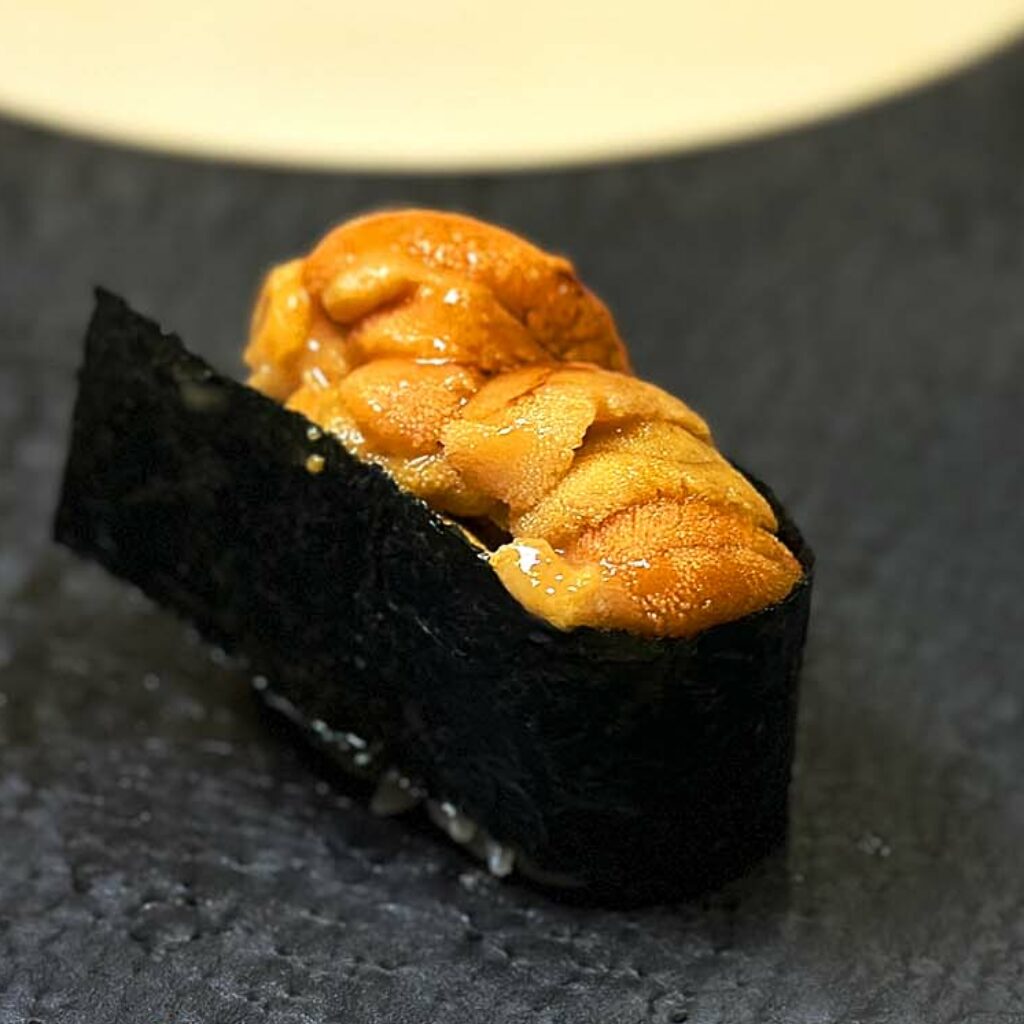
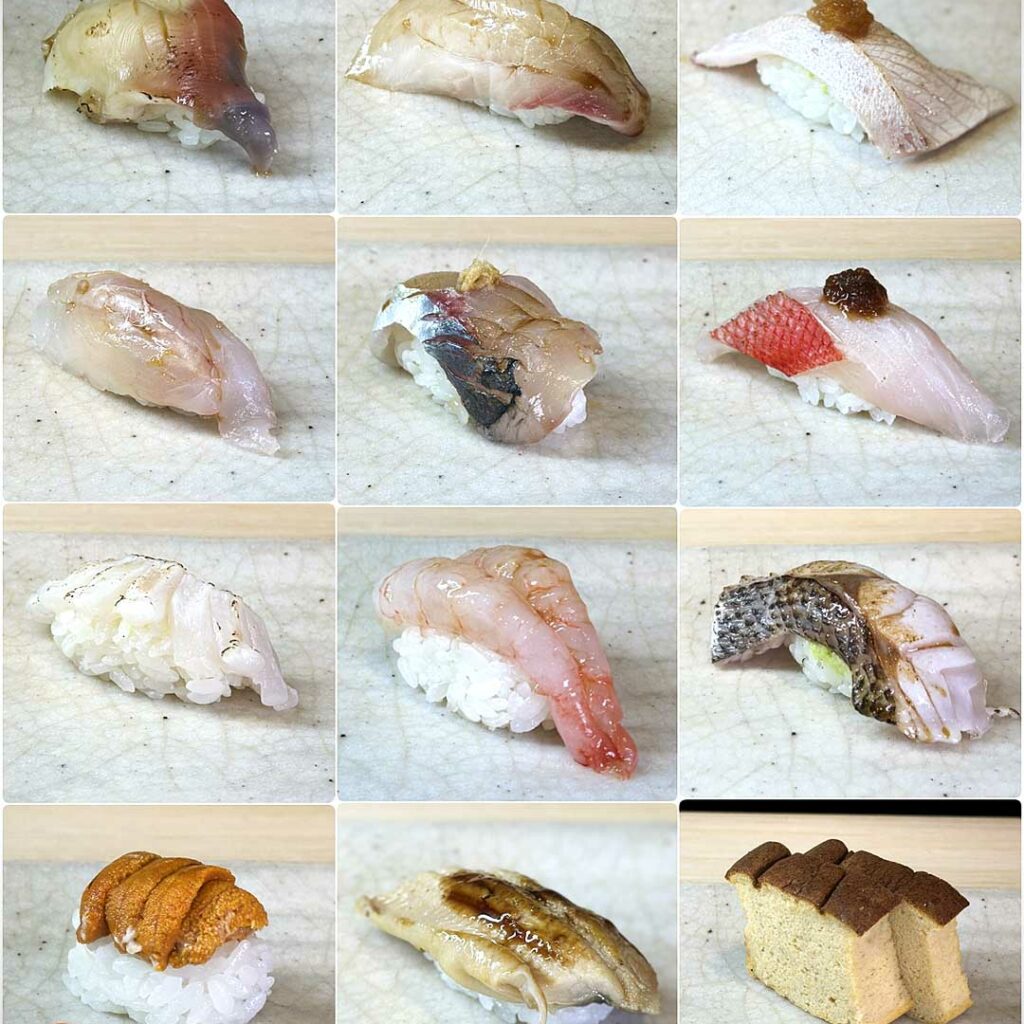
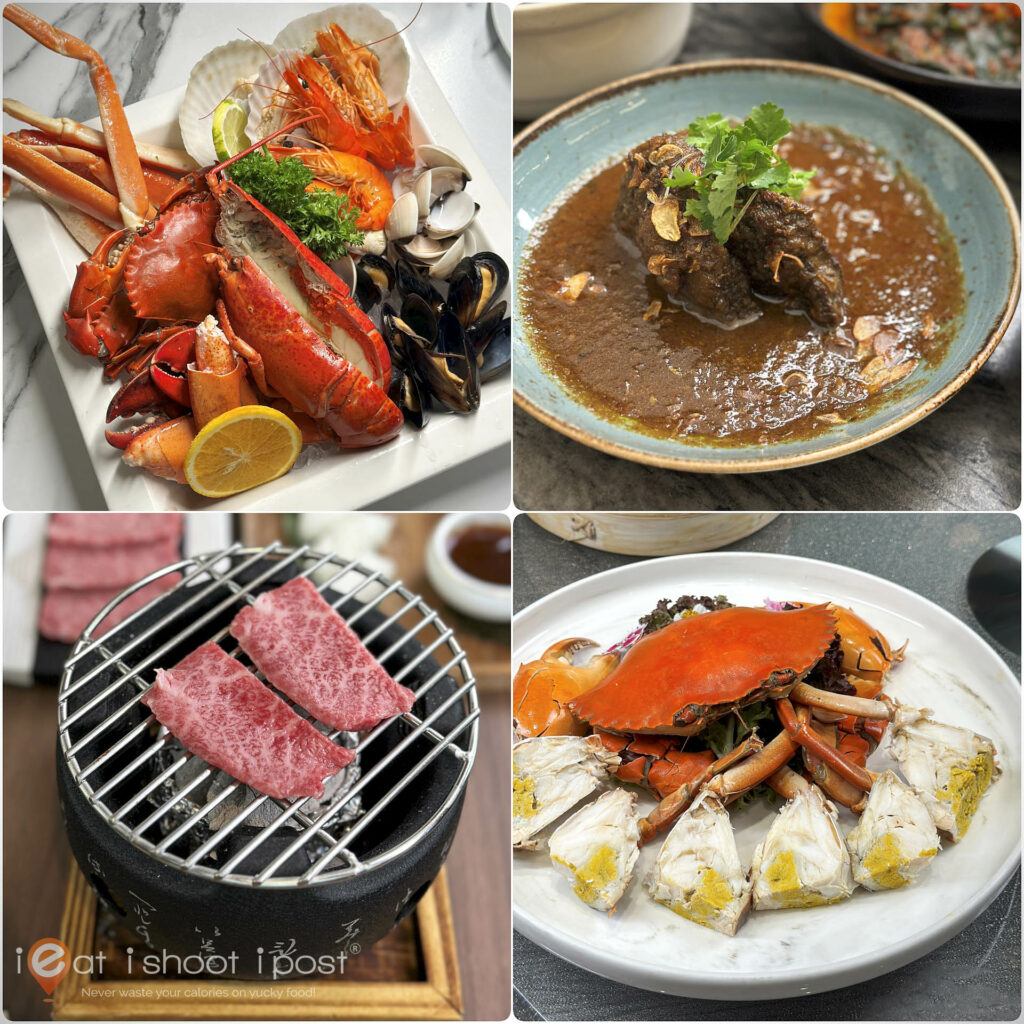
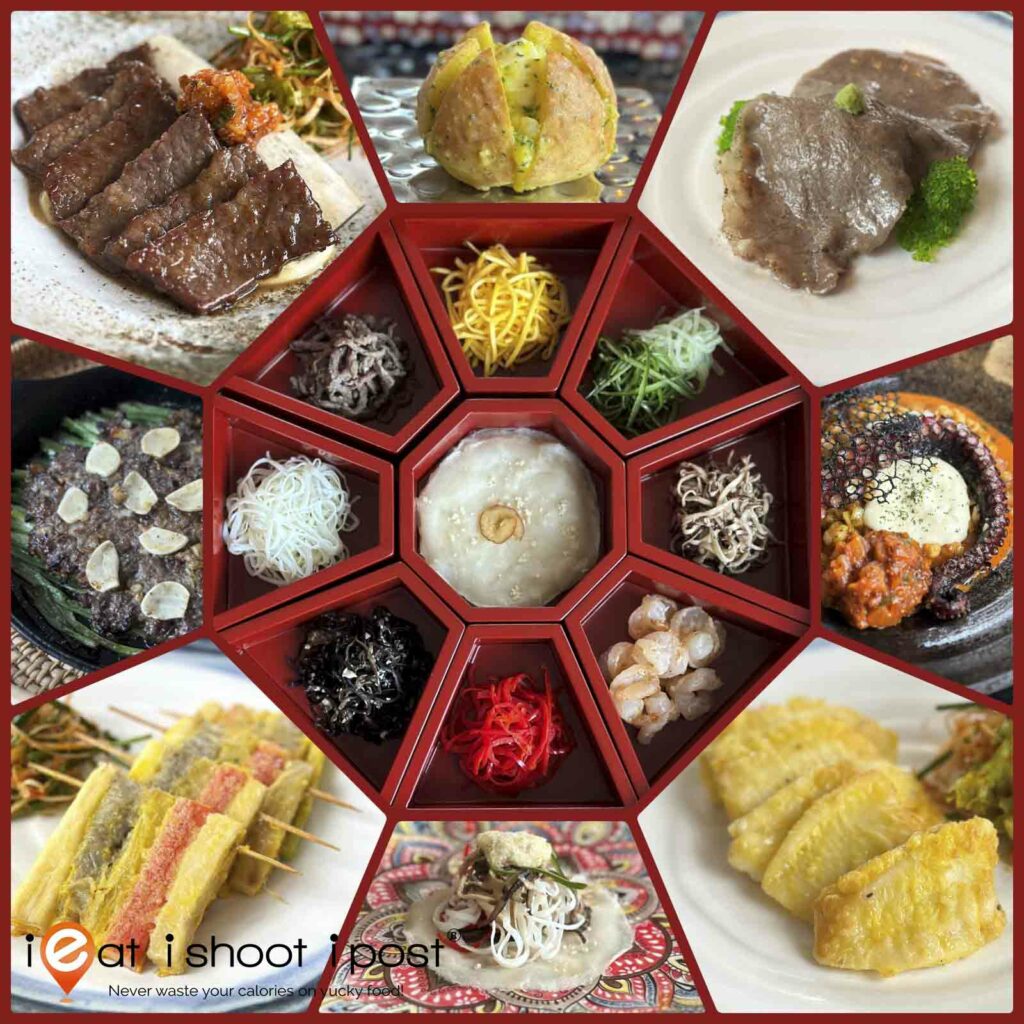
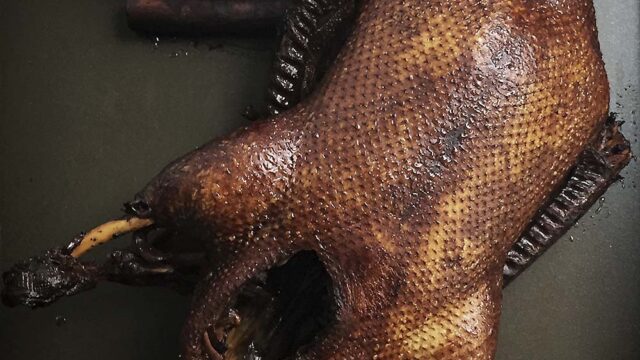
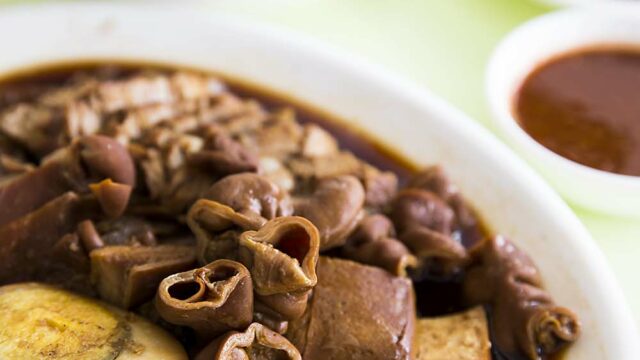



Aged tuna is such a treat! But for my money I love grilled tuna collar.